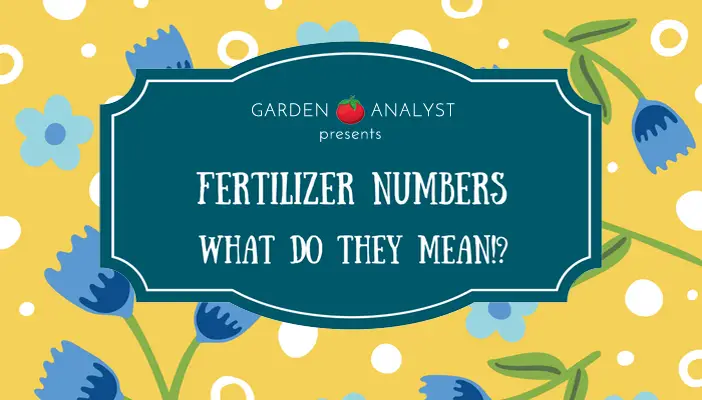You’ve probably seen fertilizer numbers such as 10-10-10 or the acronym NPK in your local garden store and asked yourself: what is NPK? What do the fertilizer numbers mean? or even how does fertilizer work?
In this article we’ll answer all your questions and will explore basic fertilizing for plants and how to choose the right fertilizer for your garden

What Is NPK?
In order to understand what the numbers mean on a bag of fertilizer, we need to first understand what NPK is. In short, NPK is the fundamental food source for you plants – this acronym stands for:
- Nitrogen (N)
- Phosphorus (P)
- Potassium (K) (also known as Potash)
Each individual letter beside their name relates back to their element on the Periodic Table of Elements, hence where the acronym NPK is derived. Now that you know what NPK is, its time to learn what they do and why they are essential to growing an abundant, healthy garden.
How does Nitrogen help your soil?
So why is Nitrogen important? Nitrogen is mainly responsible for the development of the leaves and foliage on a plant. Appropriate nitrogen in your soil will provide you foliage growth and stimulate shoot growth in your plants.
How does Phosphorous(P) help your soil?
Phosphorous is largely responsible for root growth and the flower and fruit development of your plants.
How does Potassium(K) help your soil?
Think of Potassium as the multi-vitamin for your plants health – it helps to ensure the overall function of your plant continues to work correctly and helps activate at least 60 enzymes involved in the plant growth process. This increases the hardiness of your plants which strengthens the stalks and increases resistance to disease.
What Is Fertilizer Numbers?
Each number you see on fertilizer bottle represents the percentage amount of nitrogen, phosphorous and potassium(NPK) that is present in the fertilizer. The three numbers directly relate to the acronym, NPK. The first number is always nitrogen, second number is phosphorous and third number is potassium.
For example, a bag of fertilizer marked with 10-15-20 indicates that the formula is 10% nitrogen, 15% phosphorous and 20% potassium. The rest of the fertilizer ingredients consists of filler and other nutrients. Be sure to keep in mind that having a higher number for NPK doesn’t necessarily mean that it’s better, higher concentrations of NPK can burn your plants if not spread out appropriately.
Typically, the type of fertilizer you want to use is going to depend on type of plants and vegetables your growing – some deplete other nutrients faster than others. For example, pepper plants much prefer nitrogen rich soil, so a fertilizer with a high concentration of nitrogen would be your best choice.
For example, if you are looking to increase your yield, a phosphorous heavy fertilizer will help ensure you stimulate flower and fruit development of your plants.
How Do You Know What Fertilizer To Use?
Once you become more familiar in the garden, you will be able to spot symptoms of your plants and treat them appropriately; but the only guaranteed way to determine what is missing in your soil is to conduct and soil test.
Soil test kits are also cheap and very easy to use – they will ensure that you know precisely what type of fertilizer you need to add to your soil to amend it.
As you can see, knowing how your fertilizer works is an integral part to understanding the core needs and wants of your garden. This is the first step into improving your crop output and I’m happy to have been able to share it with you.
Now get out there and start fertilizing!